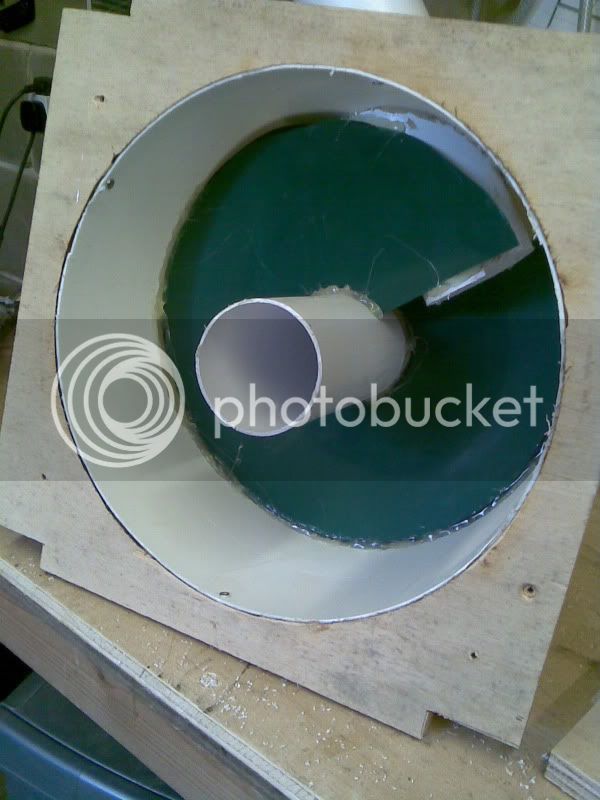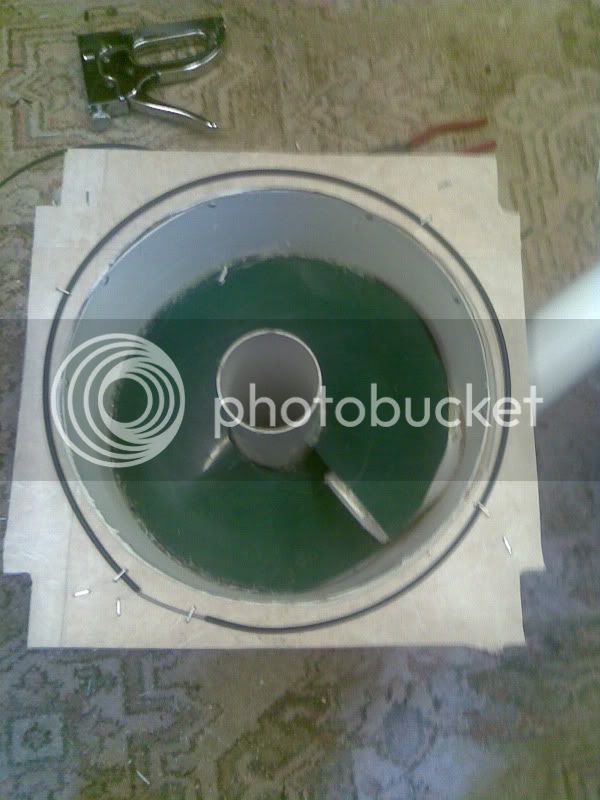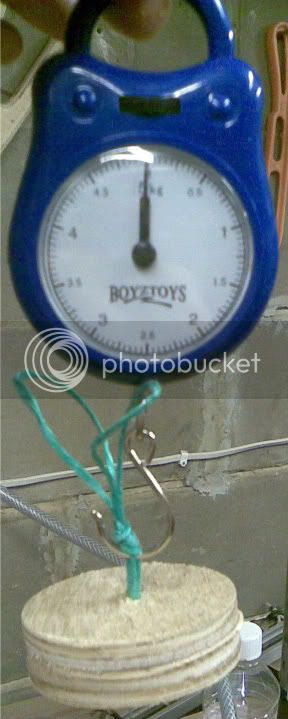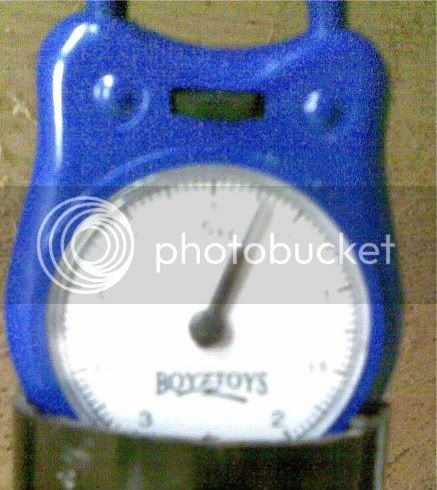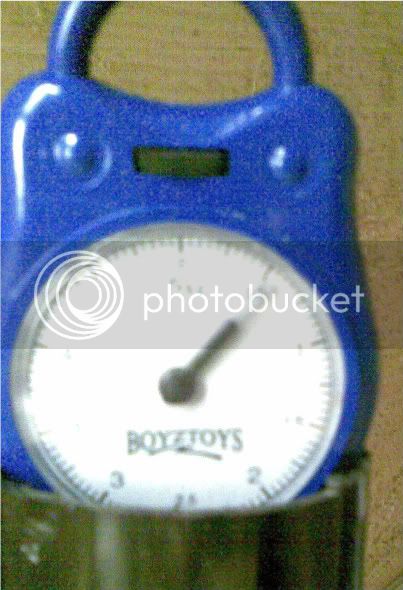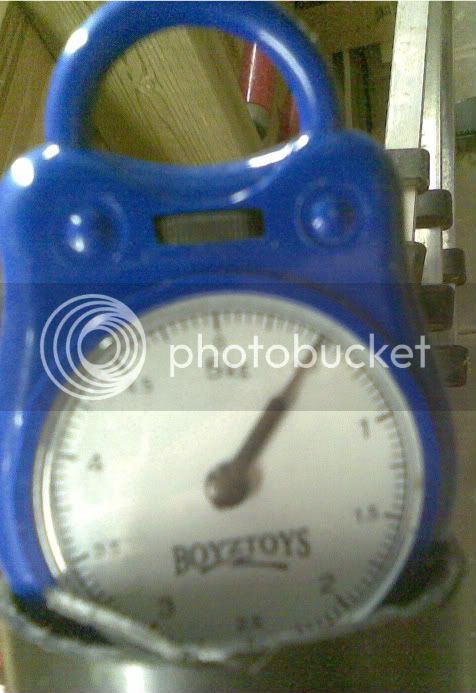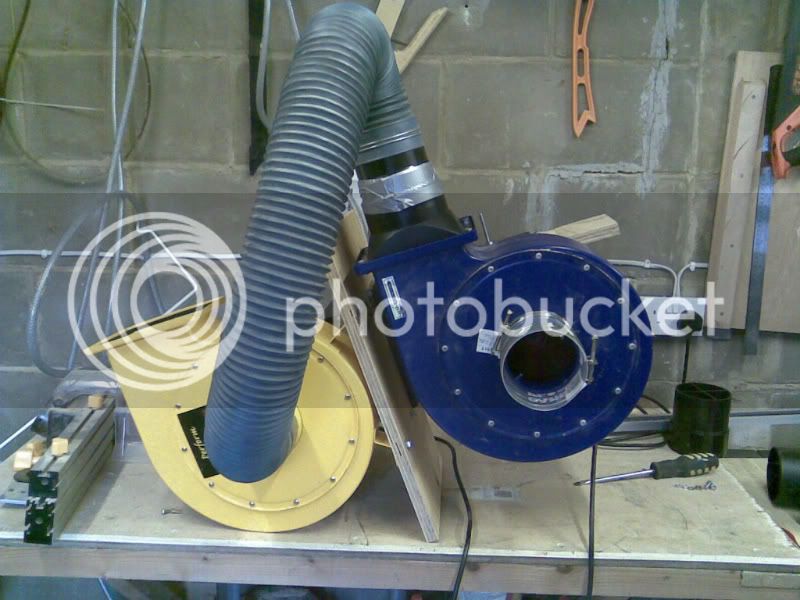Warning This is starting to get Anal and a bit of an obsession
OK so I braved the HOT workshop tonight to start fault finding my air leaks on my extractor/cyclone system.
Got this off of the bay for a few quid :
The plug is cut a few mm narrower than the 63mm pipe:
on with the measurements!
first up one blower, no cyclone:
Hopefully you'll just be able to make out 0.25kg
next with both blowers on, no cyclone:
by my reconning just above 0.5kg, thats double the suck 8)
now by this point its starting to get hot in the workshop and sweat is pouring off (literally).
But I connect the cyclone and start listening for leaks.
Lots of duct tape later (as a temp fix) I end up with:
close, but no biscuit yet :?
Sealing required around:
1) bin lid
2) bin lid -> flexi pipe
3) flexi pipe -> cyclone bottom
and guess what, I now have a partially collapsing bin :twisted: looks like I'll have to "rib" it.
I gave up under the heat stress 8)
looking promising, I need to mount the cyclone properly but don't yet have the funds to spray and clean it up.
but I REALLY want to plastic weld all the piping and hook it up :roll:
I recon I must be still loosing 5-10%...........
Steve

































